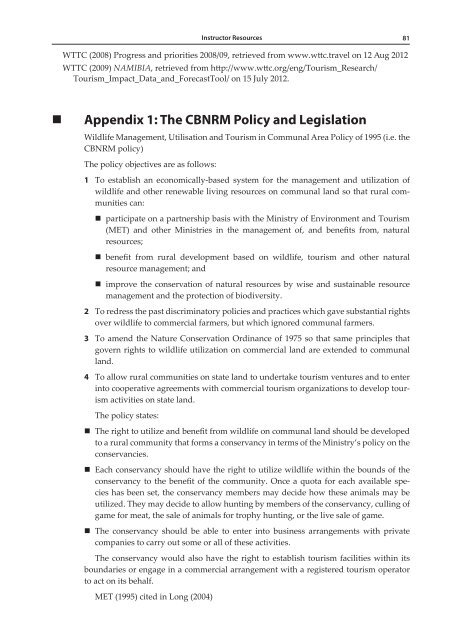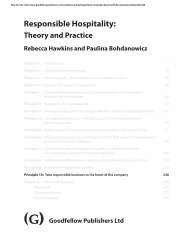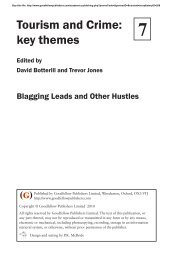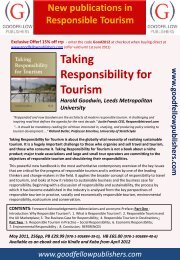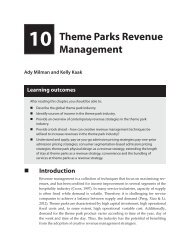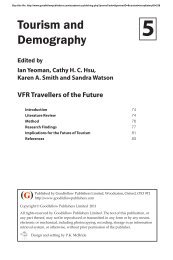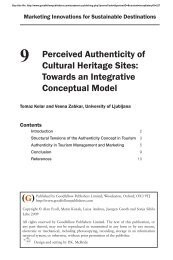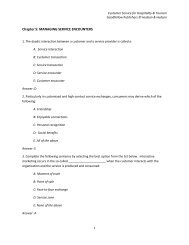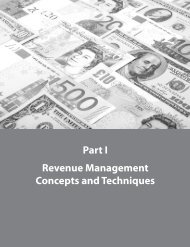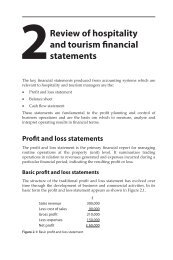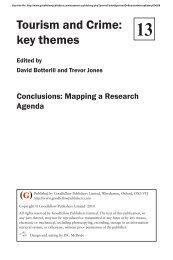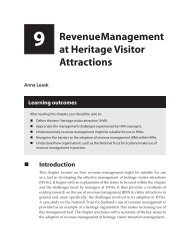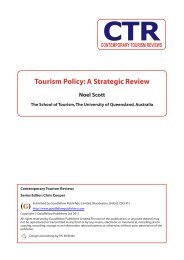Instructor Resources - Goodfellow Publishers
Instructor Resources - Goodfellow Publishers
Instructor Resources - Goodfellow Publishers
Create successful ePaper yourself
Turn your PDF publications into a flip-book with our unique Google optimized e-Paper software.
<strong>Instructor</strong> <strong>Resources</strong><br />
81<br />
WTTC (2008) Progress and priorities 2008/09, retrieved from www.wttc.travel on 12 Aug 2012<br />
WTTC (2009) NAMIBIA, retrieved from http://www.wttc.org/eng/Tourism_Research/<br />
Tourism_Impact_Data_and_ForecastTool/ on 15 July 2012.<br />
• Appendix 1: The CBNRM Policy and Legislation<br />
Wildlife Management, Utilisation and Tourism in Communal Area Policy of 1995 (i.e. the<br />
CBNRM policy)<br />
The policy objectives are as follows:<br />
1 To establish an economically-based system for the management and utilization of<br />
wildlife and other renewable living resources on communal land so that rural communities<br />
can:<br />
• participate on a partnership basis with the Ministry of Environment and Tourism<br />
(MET) and other Ministries in the management of, and benefits from, natural<br />
resources;<br />
• benefit from rural development based on wildlife, tourism and other natural<br />
resource management; and<br />
• improve the conservation of natural resources by wise and sustainable resource<br />
management and the protection of biodiversity.<br />
2 To redress the past discriminatory policies and practices which gave substantial rights<br />
over wildlife to commercial farmers, but which ignored communal farmers.<br />
3 To amend the Nature Conservation Ordinance of 1975 so that same principles that<br />
govern rights to wildlife utilization on commercial land are extended to communal<br />
land.<br />
4 To allow rural communities on state land to undertake tourism ventures and to enter<br />
into cooperative agreements with commercial tourism organizations to develop tourism<br />
activities on state land.<br />
The policy states:<br />
• The right to utilize and benefit from wildlife on communal land should be developed<br />
to a rural community that forms a conservancy in terms of the Ministry’s policy on the<br />
conservancies.<br />
• Each conservancy should have the right to utilize wildlife within the bounds of the<br />
conservancy to the benefit of the community. Once a quota for each available species<br />
has been set, the conservancy members may decide how these animals may be<br />
utilized. They may decide to allow hunting by members of the conservancy, culling of<br />
game for meat, the sale of animals for trophy hunting, or the live sale of game.<br />
• The conservancy should be able to enter into business arrangements with private<br />
companies to carry out some or all of these activities.<br />
The conservancy would also have the right to establish tourism facilities within its<br />
boundaries or engage in a commercial arrangement with a registered tourism operator<br />
to act on its behalf.<br />
MET (1995) cited in Long (2004)


